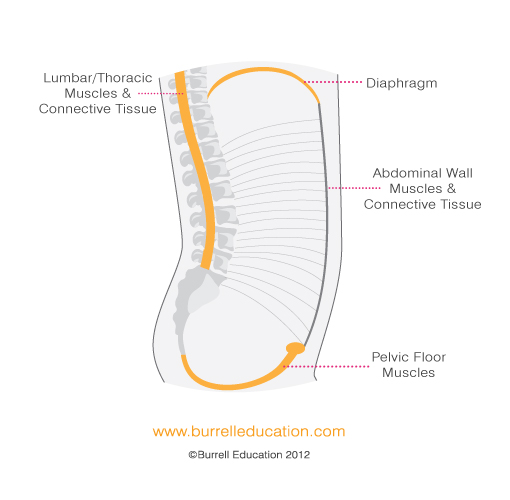How well the ‘core’ works is integral to so many aspects of our whole wellbeing, not just preventing back pain and ‘oops’ moments, although it is pretty great at doing those things and there is nothing a bit of discomfort to motivate us to make a change. After all that is all the body is asking for when it offers us these symptoms.
In these cases redeveloping ‘core strength’ can be really helping in improving the situation. However, not all ‘core strengthening’ is created equal. To coin a phrase “it ain’t what you do, it’s the way that you do it…. that’s what gets results”.
There is an important distinction to be made between ‘core exercise’ and ‘core training.’ Core exercise involves doing a sets of repetitions of exercises often in isolation. It doesn’t necessarily consider if the exercises are contributing to the functionality of the entire body. This is not necessarily ‘bad’ but not beneficial if the body is already under strain.
On the other hand, ‘core training’, addresses functionality in the whole body. It includes your breathing, your muscles, your existing patterns of engagement, resting tension and how you put all of that together (particularly when you moving) to establish a synergistic relationship throughout the body.

When addressing symptoms of core dysfunction its important to look at ‘core training’ as it incorporates the Reflexive Core. This is the inner most part of the core system and is represented in the diagram below. Our respiratory diaphragm is at the top of the balloon and the pelvic floor muscles are at the bottom of the balloon. These muscles are mirror images of each other. The deep abdominal muscles wrap around connecting back to the front and the top and the bottom.
When all parts of the ‘core’ work well together they engage with each other and are able to automatically respond to our movements and changes in pressure e.g. sneezing, coughing, jumping, lifting, running, etc. However, this inner group of muscles can be effected by the outer muscles in this area impacting on their capacity to work together. So, whilst we want to support a certain area, we take a whole body approach to the redevelopment of ‘Core Strength’ to help the body to return to how it was designed to work.
If you’d like help to resolve any ‘Core’ issues (such as pelvic floor problems, diastasis recti/tummy gap), recurring back or pelvis pain that you may be experiencing feel free to reply to this email and I’ll let you know how I can help.

Recent Comments